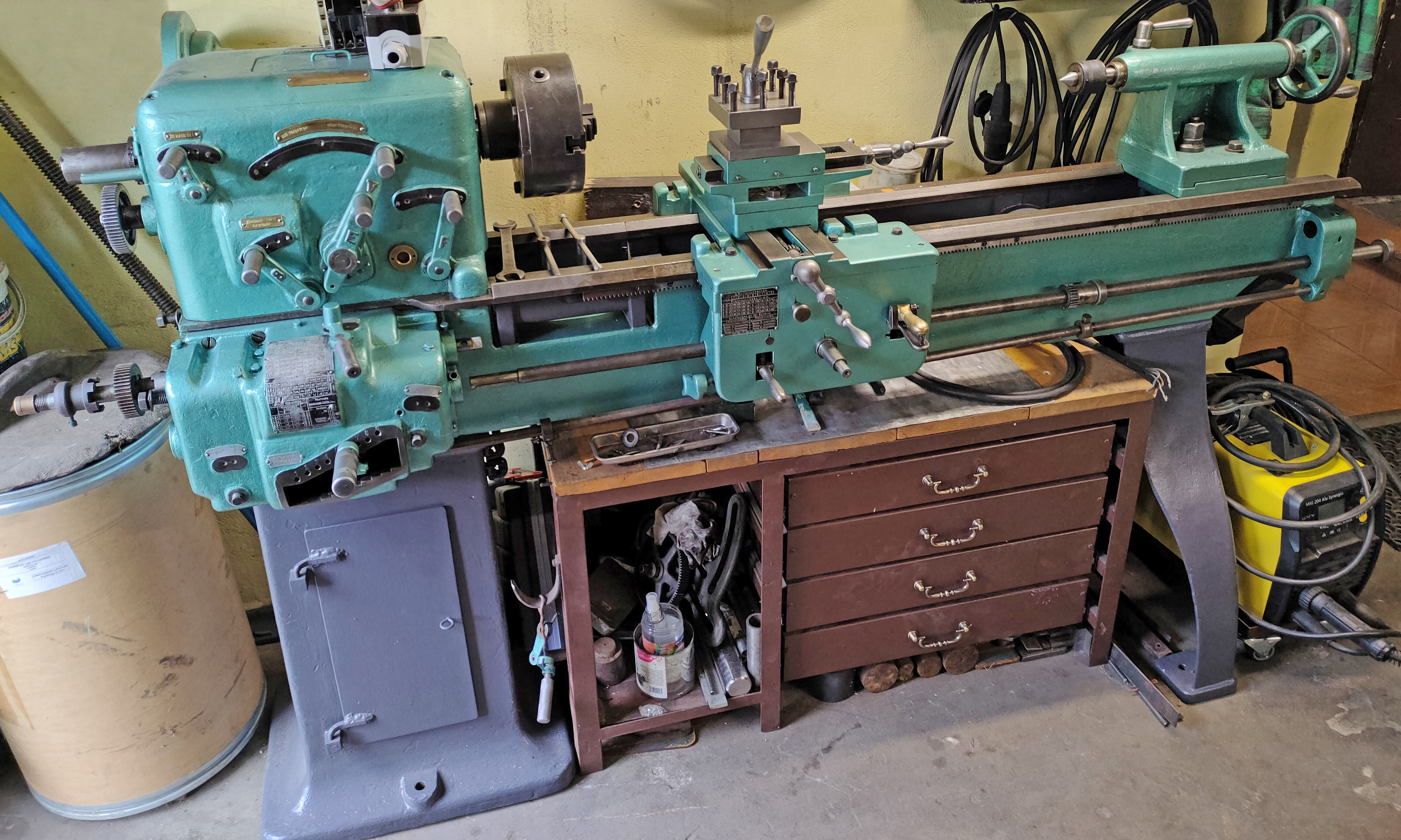|
Based in Nottingham, England - not a town noted as a centre of machine tool production - Lee & Hunt were active during the latter half of the 19th century.
Now seldom found - only two examples are known to the writer - Lee & Hunt made very ordinary backgeared and screwcutting types typical of so many other English makers at the time. As the only turning tools available were carbon steel that strictly limited how much metal could be removed in one pass, makers economised by making beds of a rather light construction that were further weakened with either an open gap or a detachable gap piece. The ways were flat on top with 60° dovetail sides to guide the carriage.
The apron was perfunctory, just wide enough to carry a handle to engage the leadscrew clasp nuts (through a snail cam) and a large crank handle connected directly against a rack with no step-down gearing. The result of the latter arrangement was that the slightest movement of the handle produced a disproportionately long travel of the carriage that made it almost impossible to take a steady, gently cut by hand.
Both screws of the compound slide were (as was common at the time) driven by awkward-to-turn detachable crank handles and lacked micrometer dials; the threads were also left uncovered, and so exposed to the wearing effects of swarf and dirt. To compensate for the high-geared carriage travel, the swivelling top slide was given a movement long enough for most hand-turned jobs to be finished by that slide alone.
Other early design features included a headstock located against a central tennon and held down by just a single stud and nut and with the spindle thrust taken against a bracket supported externally on two bars screwed into the end face of the headstock. However, the arrangement was not so ancient as regards the spindle bearings which, instead, of being older style bronze "boxes" retained by simple two-bolt top clamps, were of the circular, enclosed and adjustable type The headstock was fitted with a conventional backgear arrangement with the rear-mounted gears carried on an eccentric shaft; naturally, no guarding was provided for either these gears or the screwcutting changewheels - it was your fault if you tripped, or were otherwise careless, and the running gears sliced off your fingers..
|
|







